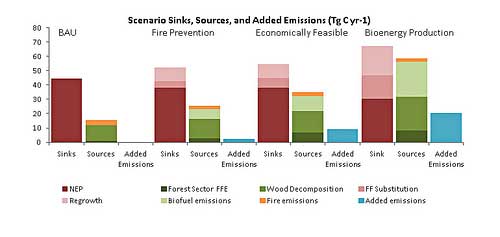 Dave Shannon, an engineer and a member of Douglas Channel Watch discusses Enbridge’s planned oil spill response for the Northern Gateway Pipeline along the critical Hunter Creek region at a meeting of the District of Kitimat Council, Nov. 7, 2011. The circled numbers indicate the barrels per day of diluted bitumen that Enbridge planners say would spill from a “full bore breach” of the pipeline. (Robin Rowland/Northwest Coast Energy News)
Dave Shannon, an engineer and a member of Douglas Channel Watch discusses Enbridge’s planned oil spill response for the Northern Gateway Pipeline along the critical Hunter Creek region at a meeting of the District of Kitimat Council, Nov. 7, 2011. The circled numbers indicate the barrels per day of diluted bitumen that Enbridge planners say would spill from a “full bore breach” of the pipeline. (Robin Rowland/Northwest Coast Energy News)
With all the scandals around the media these days, one who loves journalism at first cannot imagine that a Canadian newspaper could hit a new low. But in these polarized days when you suddenly see a newspaper columnist arguing against free speech, you’re no longer surprised, just a little sicker.
Writing in The Calgary Herald on Nov. 4, 2011, columnist Deborah Yedlin wanted to limit the number of people who can make oral comments at the Joint Review Panel on the Northern Gateway Pipeline, because in her view, there were just too many people who wanted to make a ten minute presentation to the panel and horror, of horrors, some of them aren’t even Canadian, they’re foreigners (although Yedlin doesn’t actually use the word foreigners). For Yedlin, all those didn’t make the cut should simply write letters of comment.
With today’s announcement by the Joint Review Panel of the locations for the panel hearings, it looks like the bureaucracy didn’t take Yedlin’s advice.
Since the Joint Review Panel will make a decision that will affect
peoples’ lives for decades to come, (whereas having demonstrations,
blogging or
shouting from the rooftops would be totally ineffective in this case)
speaking before the panel is a free speech issue. To forbid these people
their ten minutes before the Joint Review Panel,
to tell them to just write a letter just to speed things up, as Yedlin
suggests, is a blatant
denial of effective free speech and another step in chipping away at
the already fragile Canadian democracy.
The column was called “Does everyone have a right to complain at Northern Gateway pipeline review?” In it, Yedlin asks.
The question – with more than 4,000 individuals, companies and organizations registered to make a 10-minute statement – is whether it will be more of a filibuster than a hearing.
lthough the math suggests about 95 days of hearings, assuming everyone shows up and the panel sits for seven hours each day, it’s highly likely it will go on much longer.
Although, to be fair, she does ask “should individuals who do not live along the pipeline route, are not Canadian residents or citizens, be allowed their 10 minutes?” the implication of the entire column, read as whole, especially her overall conclusion, is that everyone, not just non-Canadians, who want to speak are just part of that filibuster against the pipeline and should be excluded, if possible. (More on the non-Canadian issue in part two of this analysis, The Great American Energy Conspiracy)
Yedlin wants to deny ordinary people just 10 minutes to speak. (The lawyers, as anyone who has attended one of the hearings knows, can go on for hours and hours) She thinks writing a letter is just as good. Her column is nothing less than advocacy of denying effective free speech on an issue vital to peoples’ lives, their livelihood and their communities.
Then you realize that her column, like similar columns from other business writers, mainly also employed by Postmedia, is an off the shelf opinion, based on “reporting” if you can all it that, that is too lazy to even click a mouse on a website. That too is something you have come to expect.
It’s pretty clear that Yedlin, sitting at the centre of the oil patch, is in favour of the pipeline. Although she doesn’t spell it, she says:
if a national energy strategy were in place, it would be easier for the NEB [National Energy Board] to decide whether Northern Gateway was in the public interest.
(I always thought for Albertans that “National Energy Program” were “fightin’ words.” Apparently not if it is a “national energy strategy” that favours Alberta.)
The Herald, of course, is free to write as many editorials in favour of the pipeline as it wants.
Just the facts?
A column, while opinion, should have some basis on facts. This where Yedlin and many of her columnist colleagues fall down again and again.
So let’s ask a question. What’s the difference between a columnist and an actor when it comes to the Keystone XL and Northern Gateway pipeline controversies?
Answer the actors usually do more research. A good actor, in researching a role often undertakes extensive research on the character and the environment of the story where the action takes place.
What I find astounding is that in covering this story for the last two years, I have seen no evidence that any columnist for any Canadian or American newspaper has bothered check a single document on the Joint Review site that would bolster a pro-pipeline argument. There are lots of pro-pipeline documents from Enbridge on the site. It doesn’t cost anything, except time, for a columnist to click down (if you’re too lazy to check here’s the link ) and find documents. You don’t even have to spend pennies on long distance calls or (imagine that) actually do some on the ground reporting. The beancounters should be happy.
A journalist is supposed to research a story before they write.
Several reporters for The Globe and Mail and the Report on Business do check Joint Review site regularly. So does Mike De Souza of The Vancouver Sun, apparently the only Postmedia employee who bothers to do so.
When I
was teaching journalism at Ryerson, journalism students who didn’t do
research failed. These days most columnists don’t bother to do research,
I guess they’re too important for that.
It doesn’t help the pro-pipeline side that columnists don’t bother check facts that are in favour of their position. Those columnists, if they wished, could probably make strong arguments if they bothered to read the Enbridge documents. The trouble is they don’t. They just repeat and repurpose each other.
If Yedlin (and other columnists) had bothered to click her mouse and read the studies by Enbridge, she would have learned the precautions that Enbridge says are necessary, at the cost of multiple millions of dollars, to protect the coast of British Columbia. If she had clicked a mouse a second time, she would have read the Enbridge studies that tackle the rugged and unstable geological formations of the mountain ranges that the pipeline will cross, whether buried, in tunnels or on bridges or pylons, where building the pipeline will cost multiple millions of dollars (and perhaps, if the opponents are right, millions that will have little or no effect in case of a pipeline breach and oil spill).
So with same old, same old repetitive writing, the columnists undermine whatever points they are trying to establish, actually strengthening the position of those who don’t support the pipeline, who do make strenuous efforts and take precious time to understand and interpret the facts in the Enbridge filings.
Worse than that, with journalism’s reputation for accuracy, fairness and thoroughness already in tatters, the pro-pipeline columnists are accelerating that decline, kicking more bricks out from the already weakened foundation. No wonder fewer and fewer in the public, no matter their ideological position, trust the “main stream media.”
Public commentary
So let’s take Yedlin’s objections
Yedlin says:
Thus, the question arises as to whether those who are planning on being present are truly interested in the public process itself or if their real intent is to overwhelm it.
While the review panel has said public commentary is an important part of the process because it might yield information useful to its decision, the 4,000-odd submissions work out to seven times the number that presented to the Mackenzie Valley pipeline hearings – and we know efficiently how that process worked.
Moreover, public hearings are held to raise issues that cannot be easily presented in written form. In other words, the only reason to appear is if your information can only be presented orally.
While environmental groups were encouraging people sign up to make oral comments for the Joint Review Panel, the vast majority of people who are registering are signing up not to filibuster but to express fears about vital concerns. Also the National Energy Board Joint Review Process, as anyone who has attended a hearing knows, is so arcane that sometimes even lawyers who practice outside of the energy field have trouble understanding the rules of procedure. That’s why people who are worried likely need support from environmental organizations.
If Yedlin had bothered to click her mouse on the Joint Review website, she would have found there are already hundreds of thousands, if not millions of pages of documents on all aspects of the pipeline that have been filed by Enbridge and the consulting firms that Enbridge has employed. Thousands more pages, including extensive questions for Enbridge based on the original filings are being submitted by environmental groups and First Nations. For those “ordinary” people who are registered intervenors, their slim documents outline those vital concerns.
 Yedlin was not in Kitimat for the preliminary oral hearings held here on the Northern Gateway Project in August 2010.
Yedlin was not in Kitimat for the preliminary oral hearings held here on the Northern Gateway Project in August 2010.
Yedlin was not in Kitimat for the NEB hearings on the Kitimat LNG project last June. In fact, no one from a national news organization bothered to attend either hearings, reporter or columnist. Only local reporters, like myself, were present.
On both issues, the Northern Gateway pipeline which most people oppose, and the LNG projects, which most people support, the NEB/Joint Review hearings (one hearing completed, another planned, a third, for the Shell project likely) there are all kinds of issues, local issues, that can only be presented orally. These issues are extremely important to a local residents, but apparently of no concern to columnists in Calgary, Vancouver, Toronto and Ottawa.
Take one example from the LNG hearings. Traditional access to lands for the Haisla First Nation is part of the agreement with the KM LNG partners. However, access to the land around Bish Cove by non-aboriginal people for hunting, fishing and hiking was not part of any agreement. So Mike Langegger of the Kitimat Rod and Gun club made that point at the hearings and this was recognized by the NEB in its decision.
At the most recent public forum in Kitimat on the Northern Gateway pipeline, (not an NEB hearing), Liz Thorn of the Nordic Valley Ski Club pointed out that the pipeline would cross and disrupt the club’s ski trails. At the forum Northern Gateway president John Carruthers promised to have his staff look into the issue. Call that a micro-issue, but an important one for those cross country skiers.
Most of the people who want to make presentations to the Joint Review Panel cannot afford the time or the money to be official intervenors, can’t pay hourly rates for lawyers, and some say they aren’t that good at setting things down on paper. They can speak eloquently about their concerns.
View Larger Map
One big issue is Wright Sound where the Douglas Channel meets the Inside Passage. Wright Sound is where the BC ferry The Queen of the North sunk in good weather. I have heard at least a dozen people, aboriginal and non-aboriginal, who have sailed those waters for years and who can relate in great detail the potential problems from the currents, winds and tides that swirl through Wright Sound and the fears of what could happen to a supertanker in Wright Sound, despite the precautions that Enbridge say it will take.
A skipper who can describe being caught in a sudden storm in Wright Sound is not filibustering.
The Gitga’at First Nation, at nearby Hartley Bay, still complain about how traditional shellfish beds are still being affected by the relatively little oil (compared to a supertanker) leaking from the sunken ferry.
Local knowledge
While the First Nations who are intervenors have hired competent legal counsel to represent them (as they must to survive the convoluted legal proceedings of a NEB hearing) there are other issues where members of First Nations must have the opportunity to make oral presentations. For the First Nations collectively there is “TLK”, traditional local knowledge, often about relatively small stretches of river or coastline and TLK is best described in an oral statement. Then there are the issues where individual members of First Nations are concerned, for example, where the pipeline may cross a family’s trapline, an issue that, according to my First Nations sources, has, so far, fallen through the cracks in the pipeline so to speak.
Yedlin continues her belief that as much as possible should be on paper, while again in the column she is saying that non Canadians should present their case only in written form, the implication is that everyone else should as well.
Moreover, public hearings are held to raise issues that cannot be easily presented in written form. In other words, the only reason to appear is if your information can only be presented orally. Presumably if there is salient, scientific evidence coming from respondents who live outside Canada, that information could be put forward on paper. That’s the beauty of good science.
There are plenty of local examples where the information on paper is far from adequate.
Take, for example, Enbridge’s contingency plans for a pipeline breach along the critical Hunter Creek zone of the pipeline route, where the pipeline would emerge from a mountain tunnel, then head downslope by Hunter Creek toward the Kitimat River, in an extremely rugged area, where, if there was a spill, it would be difficult to reach under even under the most optimum conditions.
In an oral (yes oral) presentation to District of Kitimat Council on Nov. 7, 2011, John Shannon, an engineer representing the environmental group Douglas Channel Watch described how he and colleague Murray Michin checked out the old logging road that is the only access to the area, only to find landslides and wash outs all along the old road. That road is constantly washed out in summer, In winter it would be covered with at least a metre of snow if not more. At that point, a pipeline breach that was below Enbridge’s detection level would mean that the bitumen would flow under the snow perhaps for months before anyone found out.
The beauty of a good hike is that you find what you isn’t in the scientific report on paper, probably written by a fly-in fly-out consultant, not by a local resident.
All these questions for oral commentary could be called micro-issues if you will but these micro-issues should not be swept away for the convenience of giant corporations. The Northern Gateway pipeline will snake across Alberta and British Columbia for 1777 kilometres and there is likely at least one micro-issue at each of the 1,777,000 metres.
Denying free speech is something you might expect from Stephen Harper’s spinmeisters (and we’re seeing the time limitations at all stages of a Commons bills in the current parliament, especially at the committee hearings on the crime bill)
For a newspaper columnist to suggest that a lot of people actually affected by the pipeline be denied opportunity to speak in person, relying instead on a letter, just because the time it will take is inconvenient, is, as I said, a betrayal of everything journalism should stand for.
Yedlin concludes:
As the beginning of the hearings looms near, the panel might want to take a closer look at the list of presenters and determine who truly has the right – and the need – to speak. Chances are if they do this, the list will be significantly shorter, and the process will fulfil the mandate that it is meant to do.
So much for free speech in a democracy. I guess for The Calgary Herald, and the mostly Postmedia columnists who want to rush the pipeline hearings, free speech is just too much trouble when the economy is at stake, especially the Alberta economy.
Flatlanders
The pipeline controversy has created a new term being used in northwestern British Columbia to describe Albertans: “Flatlanders.”
I first heard the term from an aboriginal leader. He used “flatlanders” to describe the three members of the Joint Review Panel, none of whom is from British Columbia. (Sheila Leggett is from Montreal and now lives in Calgary, Kenneth Bateman is a life long Albertan and Hans Matthews is a member of the Wahnapitae First Nation in Ontario). The aboriginal leader was asking how these people on the Joint Review Panel can understand living on the mountainous coast or sailing the waters of Wright Sound. He asked if it was fair that no one from British Columbia is on the Joint Review panel when most of the pipeline route will be in British Columbia.
A week or so later, I heard a discussion between two non-aboriginal avid salmon fisherman at a supermarket lineup. The two men were worried about the probable death of the Kitimat River if there is a pipeline breach and they were wondering if the “Alberta flatlanders” would ever care if there was a major pipeline breach (as opposed to their friends from Alberta who actually come to the Kitimat River to fish).
At a reception Saturday night at the Great Bear Rainforest photo exhibit in Kitimat, I heard a couple of local environmental activists, who while they didn’t use the term “flatlanders” were discussing why Albertans are so arrogant and so unaware and uncaring about life in northwestern British Columbia.
That growing feeling across northern BC is bit unfair to many people in Alberta.
Then again it appears that some Albertans do have an attitude problem, an attitude that the problems of people in northern British Columbia don’t amount to a hill of beans in this world.
At least that is the impression one sees reflected in the local Alberta media, (appearing daily on Google News) as well as the ongoing tide of pro-pipeline tweets from companies, politicians and individuals in Alberta.
The fact that most of the Canadian media, not just the Alberta media, feel that they can cover northern British Columbia without leaving a desk in Calgary only compounds the problem.
Perhaps Deborah Yedlin, The Calgary Herald and those Albertans who deserve to be called “flatlanders” should contemplate about what would happen to their free speech if the Alberta shoe was on the BC foot.
If the people of the northwest coast were to apply Yedlin’s views from her column, then, of course, the Joint Review Panel, would have downplayed the views of the Alberta “flatlanders” because the “flatlanders” know nothing about the storm warnings for Douglas Channel, Hecate Strait and Queen Charlotte Sound you regularly hear year round on the marine radio forecast. Applying Yedlin’s argument, any advantages the pipeline may bring to Alberta should simply be stated in a letter.
That, of course, will never happen. The Joint Review panel’s announcement today of wide spread, often two visit hearings to affected communities, combined with training sessions by NEB staff for those unfamiliar with the Joint Review Process, shows that there are at least some government institutions left in Canada that respect the democratic process.
Perhaps the columnists who want to curb the free speech of others for economic convenience, should wonder if some day they will get what they wish for and someone will try to curb their right to free speech. To start avoiding that, those columnists should start doing the kind of research and reporting expected from a first year journalism student.
After all, if you deny free speech to someone who has something important to say on the Northern Gateway, whether they are from Kitimat, Hartley Bay, Grand Prairie, Calgary, Montreal, San Diego or London, whose free speech are you going to deny on the next issue?
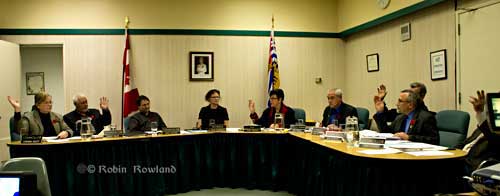
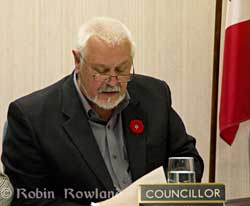 Halyk then accused the current mayor, Joanne Monaghan of withholding information from the rest of
Halyk then accused the current mayor, Joanne Monaghan of withholding information from the rest of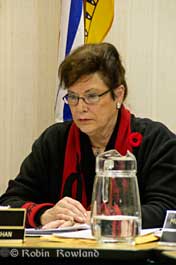 Monaghan replied by simply saying that she had had conversations with various industry representatives visiting Kitimat and that often those people visiting Kitimat had requested confidentiality. She emphasized that she had never signed a letter of intent without disclosing information to District Council.
Monaghan replied by simply saying that she had had conversations with various industry representatives visiting Kitimat and that often those people visiting Kitimat had requested confidentiality. She emphasized that she had never signed a letter of intent without disclosing information to District Council. Dave Shannon, an engineer and a member of Douglas Channel Watch discusses Enbridge’s planned oil spill response for the Northern Gateway Pipeline along the critical Hunter Creek region at a meeting of the District of Kitimat Council, Nov. 7, 2011. The circled numbers indicate the barrels per day of diluted bitumen that Enbridge planners say would spill from a “full bore breach” of the pipeline. (Robin Rowland/Northwest Coast Energy News)
Dave Shannon, an engineer and a member of Douglas Channel Watch discusses Enbridge’s planned oil spill response for the Northern Gateway Pipeline along the critical Hunter Creek region at a meeting of the District of Kitimat Council, Nov. 7, 2011. The circled numbers indicate the barrels per day of diluted bitumen that Enbridge planners say would spill from a “full bore breach” of the pipeline. (Robin Rowland/Northwest Coast Energy News)  Yedlin was not in Kitimat for the preliminary oral hearings held here on the Northern Gateway Project in August 2010.
Yedlin was not in Kitimat for the preliminary oral hearings held here on the Northern Gateway Project in August 2010. 







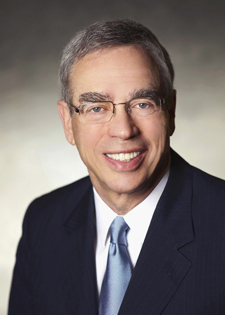
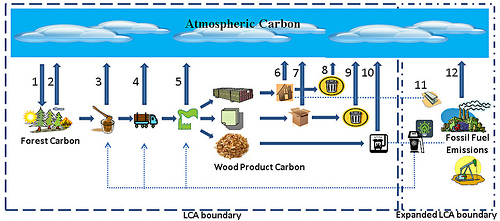
 For four years, the Oregon State study examined 80 forest types in 19 ecological regions in the three states, ranging from temperate rainforests to semi-arid woodlands. It included both private and public lands and different forest management practices.
For four years, the Oregon State study examined 80 forest types in 19 ecological regions in the three states, ranging from temperate rainforests to semi-arid woodlands. It included both private and public lands and different forest management practices. 